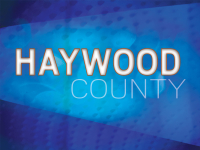Sorting out Haywood’s take on hospital sale will take time
 It’s been three months since publicly owned Haywood Regional Medical Center became a private hospital owned by Duke LifePoint Healthcare, but it will be years before the county knows for sure how much it will get from the $26 million sale.
It’s been three months since publicly owned Haywood Regional Medical Center became a private hospital owned by Duke LifePoint Healthcare, but it will be years before the county knows for sure how much it will get from the $26 million sale.
Several million came off the top of the sale price to pay off outstanding debts and bills.
Another $12 million was placed in escrow with the county’s name on it. It won’t be released until the coast is clear on any old liabilities and claims predating the hospital’s sale, a window that could be up to six years.
But the rest of the story lies with several million in a working account, an account that is ebbing and flowing on a daily basis. A Haywood Health Authority Board has been appointed to oversee the financials and settle up the bills owed by and payments due to the hospital from the period prior to its sale.
Bill Hannah, a contracted accountant with Atlanta-based Dixon Hughes Goodman, presented the Haywood Health Board with a sketch of the financials at a meeting of the body last week. As of Sept. 30, the account showed $5 million in net assets on top of the $12 million in escrow. But it will remain a moving target for a while, he said.
Related Items
“It’s not as simple as the $26 million less a number,” Hannah said. “It’s more what the value of the total business less assets that we’re going to assume, less liabilities that we’re going to pay off.”
For instance, the board still doesn’t know how much insurance money it will get to cover its losses from a July fire that forced the hospital’s evacuation and temporary closure.
The main issue stems from the fact that all three MedWest hospitals at the time — Haywood, Swain and Harris — were covered under the same insurance policy, so the insurance company doesn’t want to cover revenue losses from patients who were transferred from Haywood to Harris during the evacuation.
“As the patients were transferred out of Haywood to Harris, there was an uptick in revenue at that hospital [Harris] that they want to use to reduce the business loss here,” Hannah explained.
Money made by Harris was still a loss as far as Haywood was concerned, but that case must be made to the insurance company.
Payouts from Haywood’s stock in a company called Premier are another example. Before that company went public, Haywood Regional had membership in the company, which turned into stock when it went public. But now that the hospital’s ownership has changed, that stock had to somehow be converted into cash. It was converted into a five-year note receivable, which basically means that after five years the Health Authority will get a payment for the worth of the stocks.
“The accounting of that really is not certain because it’s such a new transition,” Hannah said. “The IPO [initial public offering] is less than a year old and not that many folks have gone through a conversion.”
The board also has yet to see how much it will get from Medicaid payments — those can only be filed during a certain window each year — it could be years until that process is complete.
Then, of course, there’s the ferreting out of which bills coming in should be paid by the Health Authority and which are the responsibility of the new owner, Duke LifePoint.
“Those cost reports and those cost report settlements will take time to resolve — they just will,” Hannah said.









